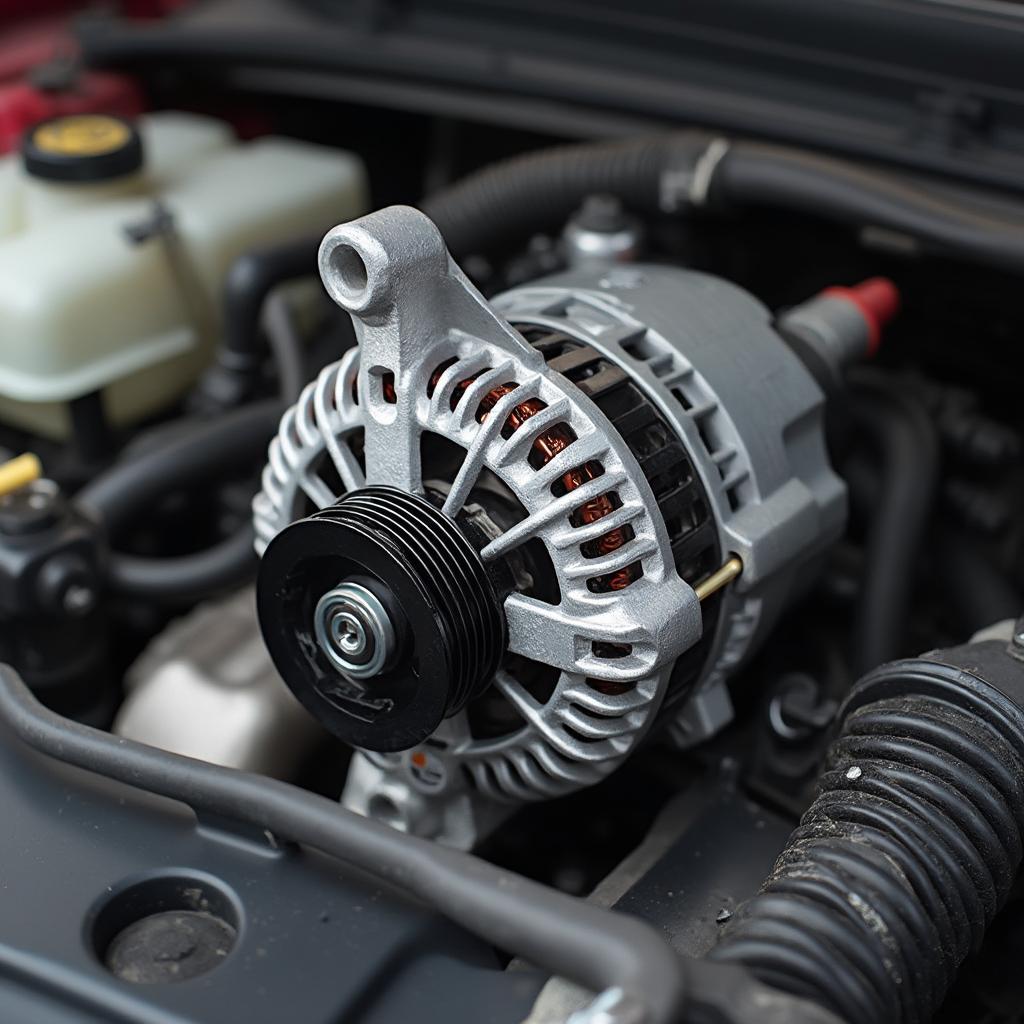The OBD2 alternator plug plays a crucial role in your vehicle’s charging system. It’s the communication link between your car’s computer and the alternator, relaying vital information about the alternator’s performance. Understanding this small but mighty component can save you from unexpected breakdowns and costly repairs.
 OBD2 Alternator Plug Location
OBD2 Alternator Plug Location
What Does an OBD2 Alternator Plug Do?
The OBD2 alternator plug isn’t directly involved in delivering power from the alternator to your battery. Instead, it acts as a messenger, transmitting data to the engine control unit (ECU). This data includes:
- Alternator Voltage: Informs the ECU about the voltage the alternator is producing, ensuring it’s within the correct range to charge the battery without overcharging.
- Rotor Speed: Tells the ECU how fast the alternator’s rotor is spinning, which is crucial for regulating voltage output.
- Current Load: Indicates the electrical load on the alternator, allowing the ECU to adjust the alternator’s output to meet demand.
Common Symptoms of a Failing OBD2 Alternator Plug
A faulty OBD2 alternator plug can disrupt the communication between the alternator and the ECU. This can lead to a range of issues, such as:
- Dimming or Flickering Lights: Inconsistent voltage supply can cause lights to dim or flicker, especially during high electrical load.
- Battery Warning Light: One of the earliest signs of a charging system problem, often triggered by a faulty alternator plug.
- Slow Engine Crank: The battery may not receive sufficient charge due to a communication error caused by a damaged plug, resulting in a sluggish engine crank.
- Erratic Gauge Readings: Inaccurate data transmission can lead to fluctuating readings on the dashboard gauges, particularly the voltmeter.
How to Test an OBD2 Alternator Plug
Testing the OBD2 alternator plug is a relatively simple procedure that can be done with a few basic tools:
- Safety First: Disconnect the negative battery cable before working on any electrical components to prevent shocks or short circuits.
- Locate the Plug: The alternator plug is typically located near the alternator itself. Refer to your vehicle’s service manual for the precise location.
- Visual Inspection: Carefully examine the plug for any signs of damage, such as:
- Bent or corroded pins
- Damaged or melted plastic housing
- Loose or broken wires
- Voltage Test (Optional): If you have a multimeter, you can test the voltage at the plug’s terminals to ensure proper signal transmission. Consult your vehicle’s wiring diagram for the correct voltage readings.
Expert Insights
“Many people overlook the alternator plug when diagnosing charging system problems,” says John Smith, a seasoned automotive electrician. “But remember, a faulty plug can wreak havoc on your entire electrical system. It’s a small part with a big responsibility.”
Conclusion
The OBD2 alternator plug, though small, plays a vital role in maintaining a healthy charging system in your vehicle. Understanding its function and being able to identify potential issues can save you from unexpected breakdowns and unnecessary expenses. Regular inspection and timely replacement, if necessary, will ensure your vehicle’s electrical system operates flawlessly for years to come.
FAQs
1. Can I drive with a bad OBD2 alternator plug?
It’s not recommended. Driving with a faulty plug can lead to more serious problems, including complete alternator failure and a dead battery, leaving you stranded.
2. How much does it cost to replace an OBD2 alternator plug?
The cost varies depending on the vehicle make and model but is generally inexpensive.
3. Can I replace the plug myself?
Replacing the plug is a relatively straightforward procedure for those comfortable with basic car maintenance. However, if you’re unsure, it’s always best to consult a qualified mechanic.
4. How often should I check my OBD2 alternator plug?
It’s a good practice to inspect the plug during routine maintenance checks or if you experience any charging system issues.
5. Can a faulty OBD2 alternator plug drain my battery?
Yes, a faulty plug can disrupt the charging process, leading to a gradual battery drain.
Need Help? We’re Here for You!
If you need assistance with your OBD2 scanner or have any car diagnostic questions, our expert team is here to help 24/7. Contact us via WhatsApp: +1(641)206-8880 or Email: [email protected].